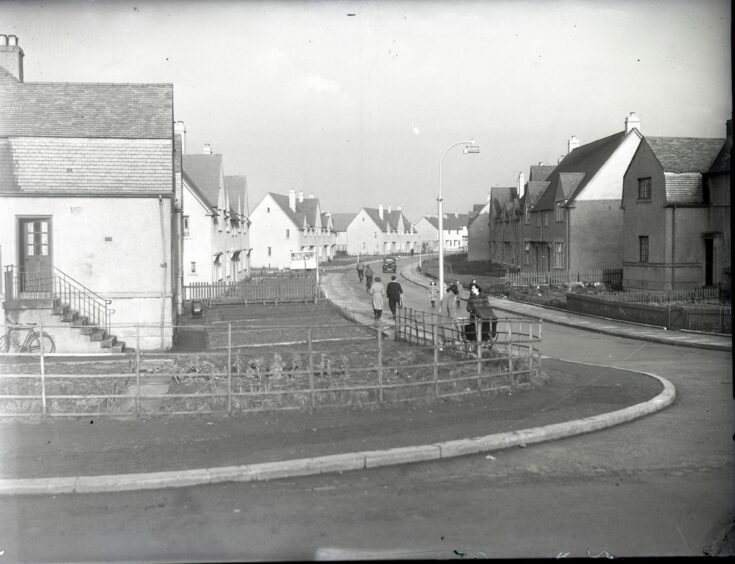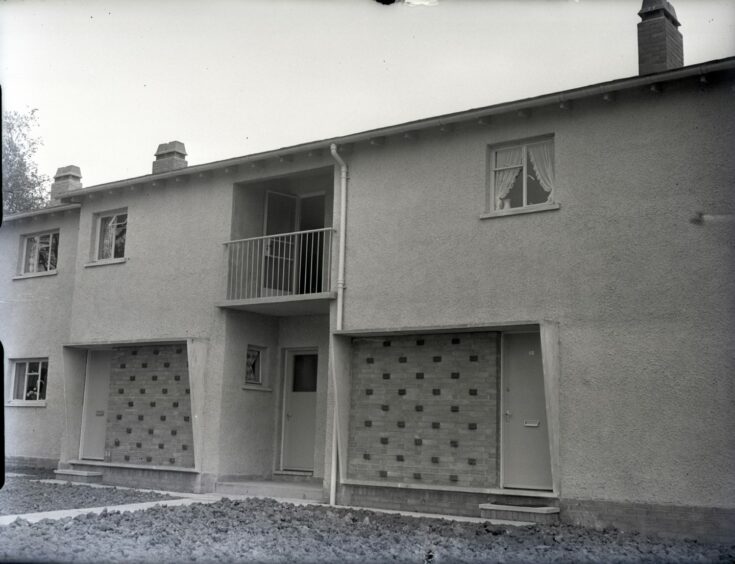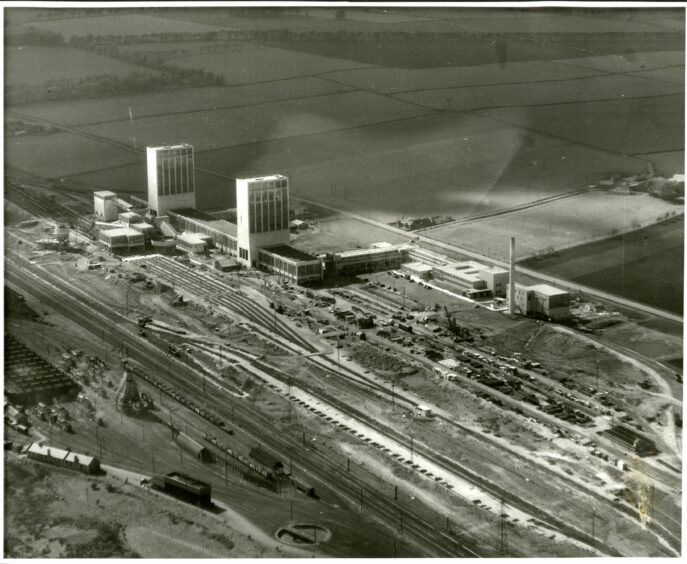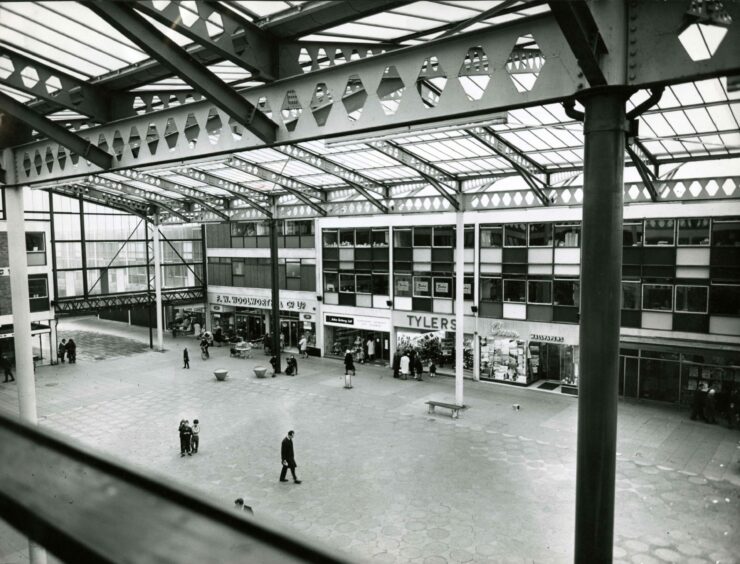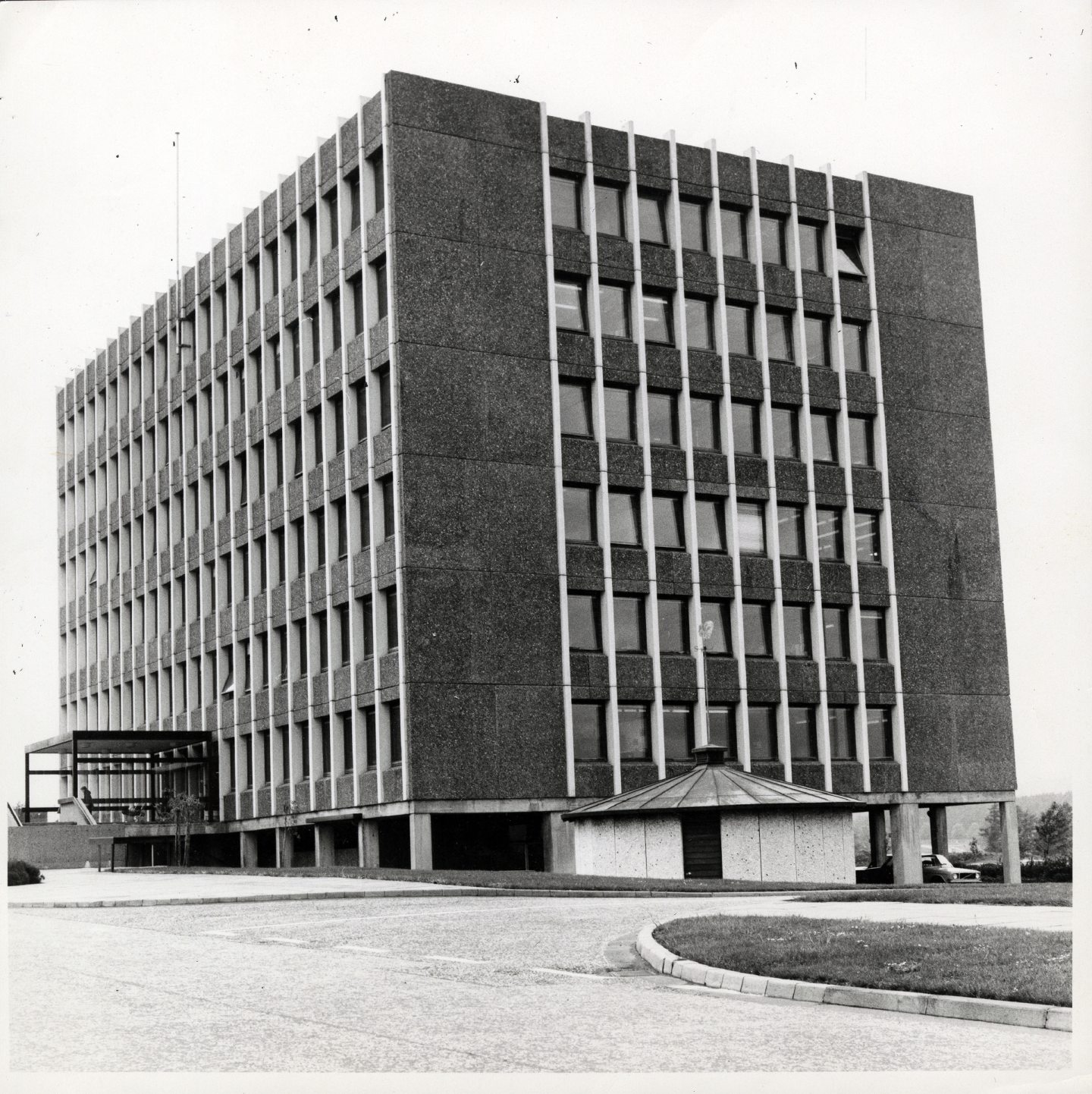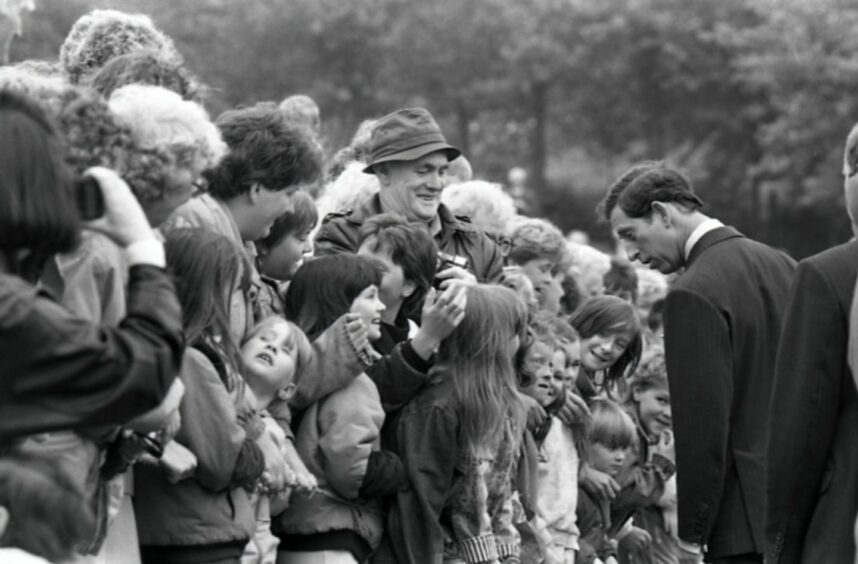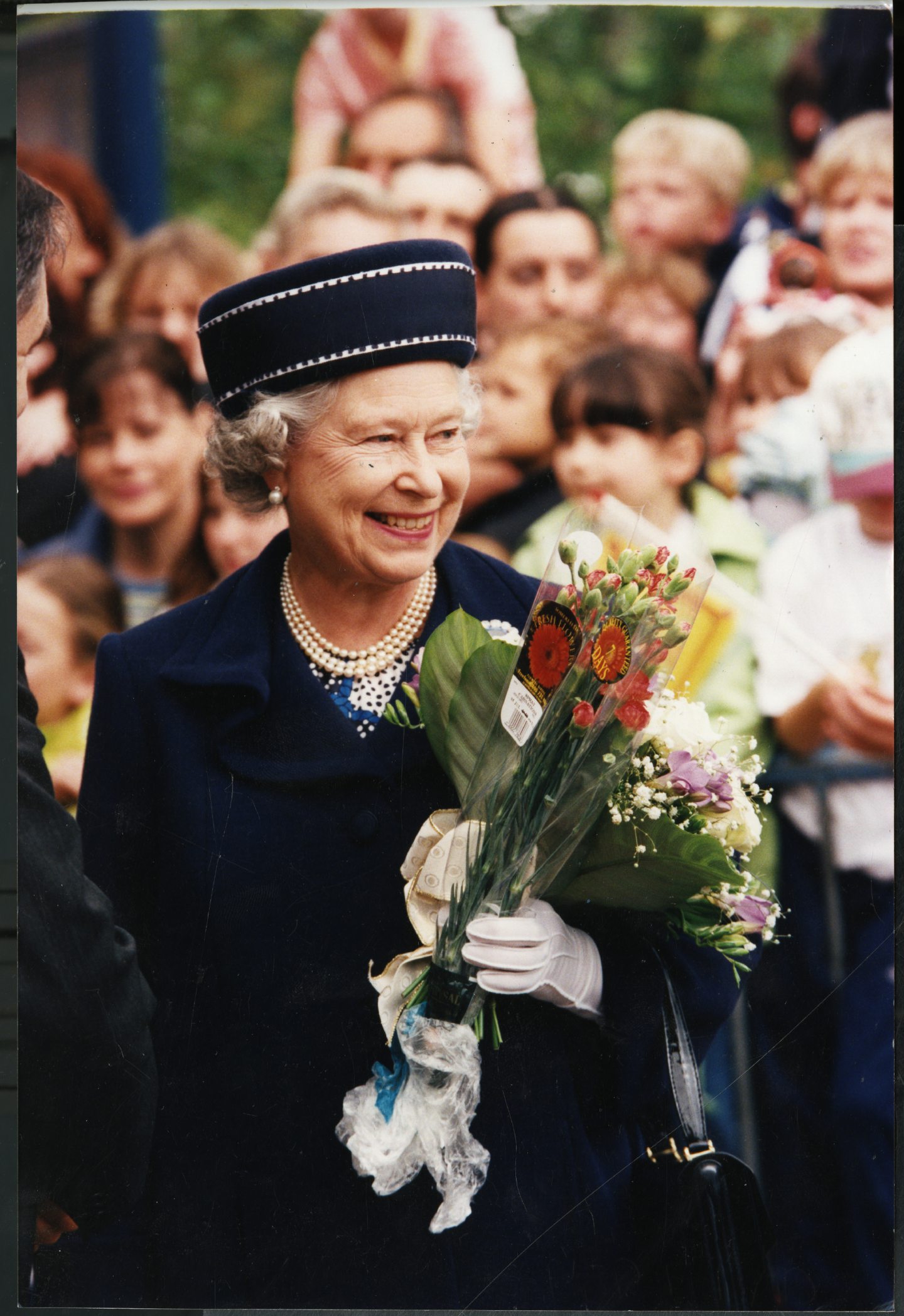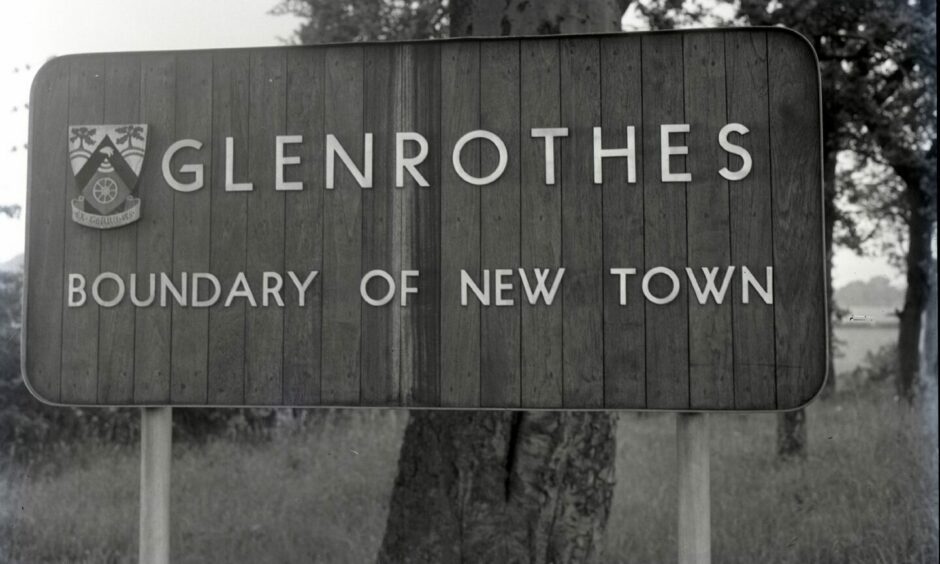
Glenrothes almost started life 75 years ago as the town of Westwood.
Conceived under the New Towns (Scotland) Act of 1946, its original purpose was to house miners who were going to be working at a newly established coal pit.
Developed at a cost of £12 million, Rothes Colliery began taking shape on the banks of the River Ore after the first sod was cut in 1946.
It was promoted as being a key driver in the economic regeneration of central Fife.
What names were in the frame for new town?
The 14-man Fife Planning Committee met in Cupar on July 4 1947 to decide upon a name for the new town and a frontrunner emerged from the pack of 12 options.
Provost Drummond from Lochgelly asked the committee to name the town after Joseph Westwood, who cut his political teeth in Fife and was Secretary of State for Scotland.
From the list of 12 the names of Glenrothes and Westwood tied with five ballot votes.
Cadham, Drostain, Thaines and Woodside each received a single vote.
Glenrothes — named after the Earl of Rothes — carried the day by eight votes to six on a second ballot despite the plea to recognise Westwood’s “services to the country”.
Glenrothes was signed off as Scotland’s second post-war new town on June 30 1948.
Labour MP Westwood — in a tragic twist of fate — died 18 days later in a car accident.
Arthur Woodburn was now Secretary for State and painted a dream picture for the future at the first meeting of the Glenrothes Development Corporation in 1948.
Mr Woodburn said the town would take about 15 years to build and would be a beacon to which other towns would look for light and guidance in their work.
“I hope there will be a raising of the standard of life generally in the new town,” he said.
“We have the opportunity to build a community that will make people feel happy and be able to live a community life while enjoying their work, and also aiding people to enjoy their leisure and facilities for culture that ought to be associated to work.
“There are going to be tremendous developments in coal mining.
“The normal 19th Century methods of such developments would have been a haphazard scramble, a sort of Klondike rush, developing in huts and finally becoming towns.
“The town, we assume, will take about 15 years to build, by which time the coal production in the area will have increased from two million to six million tons a year.”
However, the early years were rough, to say the least.
Glenrothes soon had its lifeblood cut off.
From the very start there were problems, with the Rothes Colliery affected by a strike on its first day of operation, in 1957.
Despite an official opening by a young Queen Elizabeth II a year later, in which she became the first female monarch to go down a pit, the problems that were to blight the site had already become apparent.
The 1,300 miners – just half of the original estimated workforce – found themselves fighting a losing battle against flooding and geological faults, with the sinking of shafts eventually cancelled due to the abundant problems.
With coal only able to be mined from the upper levels, the clock was already ticking for the so-called “superpit”, with the National Coal Board deciding to bring the axe down in March 1962.
When the pit closed, further development of Glenrothes almost came to a halt.
The government then designated Glenrothes a growth point.
The development corporation targeted the infant electronics industry as its saviour.
The Hughes Aircraft Corporation — a subsidiary of the legendary Howard Hughes empire — was already on board and the late 1960s saw the likes of Burroughs Machines and GI Microelectronics open for business.
Both of them failed or pulled out over the years, along with the likes of Texas Instruments and GEC, but the town continued to attract major electronics companies, with Canon and Apricot both expanding.
The Kingdom Shopping Centre opened in 1963 before a series of extensions through the decades transformed it into the domed building recognisable across Fife today.
Fife town’s milestones recalled
By the early 1970s the town’s population reached 30,000 and it was chosen as the headquarters for Fife Regional Council.
Later that decade Glenrothes was put on the sporting map when the local team won the Scottish Junior Cup.
As the 10,000th house was completed, the Duke of Edinburgh paid an official visit to the town.
The 1980s saw the sales of corporation houses to tenants gather momentum by 1986 and two further royal visits, by Princess Anne and Prince Charles.
Service industries began to grow rapidly during the same decade, which ended with the announcement of the wind-up of the development corporation.
The completion of the east Fife regional road in 1990 at last provided Glenrothes with a fast link to Britain’s motorway network and the same year marked the sale of the 6,000th corporation house.
In 1993, Glenrothes was given a central government grant for any last major projects in the new town.
That saw £16.5 million spent on developing the Rothes Halls which has hosted sell-out shows by musicians including Jools Holland, Stereophonics and the Kinks.
It has provided a platform for local shows and art exhibitions, as well as national and international performers.
Rejuvenation of Glenrothes was complete
In one of its final acts, in 1995, the corporation transferred its housing stock to Kirkcaldy District Council, after tenants had expressed a clear wish to have a local authority landlord.
The new Fife Police headquarters opened in the town in 1996.
The highlight of the town’s 50th anniversary celebrations in 1998 was the Queen cutting a commemorative cake at the Kingdom Shopping Centre.
Though its days as a mining town were short-lived, it has become Fife’s administrative centre and maintains a strong presence in the technology and manufacturing sectors.
Many firms continue to make it their base and its excellent connections by road and rail to major cities and ports make it an attractive destination for investment.
Glenrothes survived because it continued to reinvent itself over the years.
The population now stands at more than 39,000.
These are changed days, indeed, from the one-street village of 1,000 people that gave birth to it all 75 years ago.
